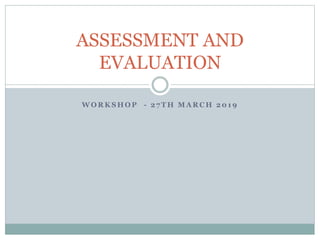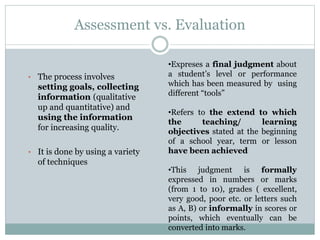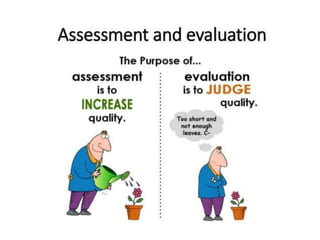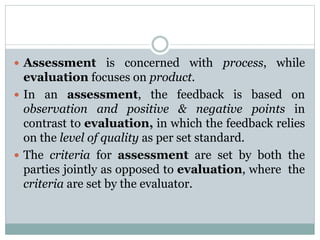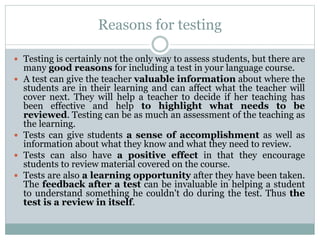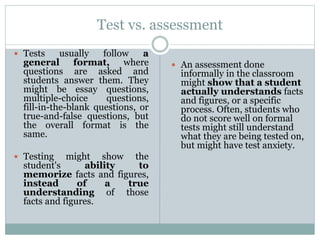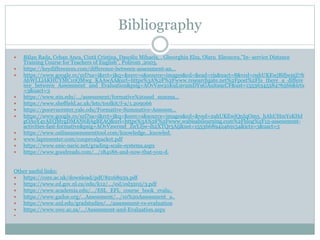This workshop covered assessment and evaluation in teaching. The goals were to raise awareness of their roles, analyze the interdependence of teaching and assessment, and practice different assessment techniques. Assessment involves collecting qualitative and quantitative information to increase quality, while evaluation makes a final judgment on performance or achievement measured by various tools. Formative assessment monitors learning for feedback, while summative assessment evaluates learning against standards and assigns grades. The document discussed differences between tests and assessments, reasons for testing, alternatives to testing like portfolios and self-assessment, grading, and types of feedback.
